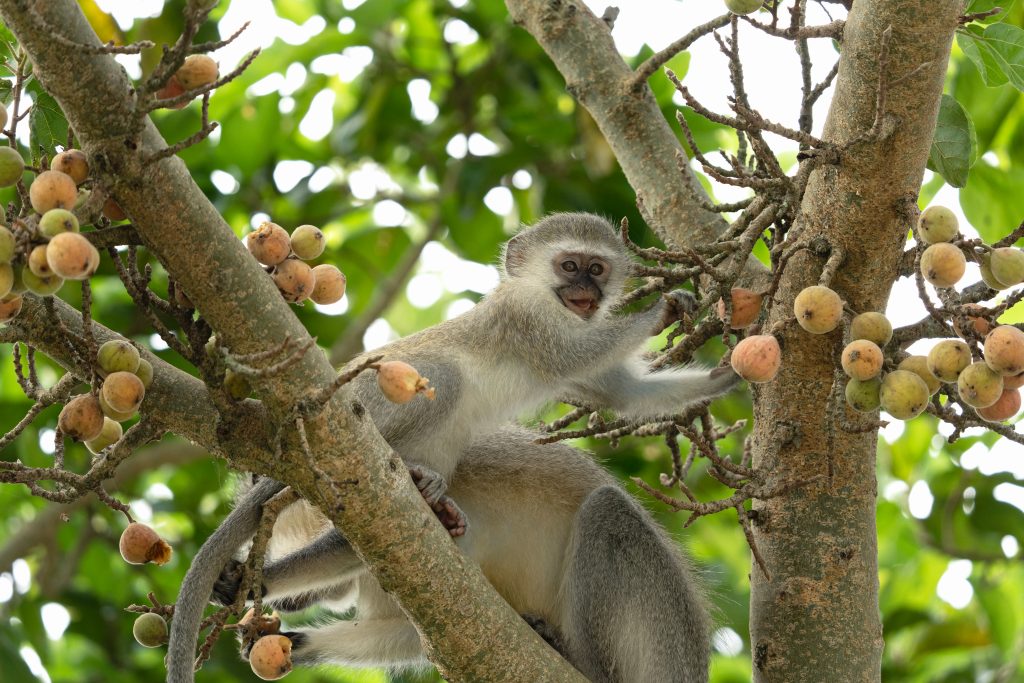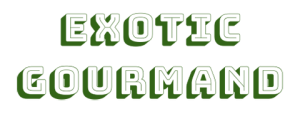Marula is a yellow, oval-shaped fruit that is highly prized by elephants in Africa. The fruit has been a part of traditional African culture for centuries and is now gaining popularity worldwide for its unique taste and nutritional benefits.
Table of Contents
What is a Marula?
Marula (Sclerocarya birrea) is a fruit-bearing tree native to southern Africa and west Africa, particularly in the miombo woodlands and savanna regions of Botswana, Namibia, Swaziland, Zambia, and Zimbabwe. Marula belongs to the Anacardiaceae family with the mango, pistachio, cashew, and sumac.
The Marula tree fruit is a small, round, yellowish fruit, about the size of a small plum, with a thick, fibrous, and leathery skin that encloses a juicy, white flesh surrounding a hard, brown, oval-shaped stone. The fruit has a tart flavor with a hint of sweetness and is commonly used to make jams, juices, and alcoholic beverages.
Marula is also known by other names such as Elephant tree, Jelly plum, and Marula plum. The tree is highly valued for its multiple uses, with the fruit, bark, and leaves used for medicinal and cosmetic purposes.
The Marula tree is visually striking with a gnarled, twisted trunk and spreading branches that can create a large, shady canopy. It is commonly found in the grassy savanna plains of southern Africa. It is a popular food source for many wild animals, including elephants, giraffes, kudu, impalas, rhinoceroses, baboons, and warthogs.
The Marula fruit taste is tart with a hint of sweetness. It has been compared to the flavor of a pineapple, with a slightly sour taste that gives it a unique and distinctive flavor. When used to make alcoholic beverages, the fruit has a somewhat nutty flavor and a smooth, velvety texture.
The marula tree’s association with elephants has led a distiller to use elephants as its symbol and contribute to elephant research and conservation.
The History of Marula
According to archaeological evidence, the marula tree already provided sustenance to early humans as far back as 10,000 years B.C. This means that our ancestors enjoyed the benefits of this incredible tree even before the invention of the wheel!
The marula tree has played a significant role in the lives of African communities throughout history. In the Pomongwe Cave in Zimbabwe, archaeologists have estimated that a staggering 24 million marula fruits were consumed, a testament to just how important this tree was to the people of that time. The marula tree’s fruit, nut, bark, leaves, and kernels were highly valued for their multiple uses.
The marula fruit is adored by African elephants when it begins to ferment slightly. Because of the fruit’s fermentation, and the documentary Animals Are Beautiful People by Jamie Uys which depicted drunk elephants, it was thought that this fruit makes elephants drunk. However, there is little scientific evidence to support this idea.
But it’s not just elephants that love this fruit – humans have enjoyed its delicious taste and numerous health benefits for centuries. The fruit and nut are rich in minerals and vitamins, making them an excellent source of nutrition.
Today, the Marula tree is found in many of South Africa’s Game Parks and rural communities, including Limpopo Province, KwaZulu Natal, Eastern Cape, and Mpumalanga. You can also see the tree enjoyed by elephants in Kruger National Park.
Despite its widespread distribution, the marula tree remains a beloved symbol of African heritage and culture, representing the resilience and resourcefulness of the people who have relied on it for so long.

What Does a Marula Taste Like?
When eaten raw, the marula fruit has a sweet and tart flavor with a texture similar to a grapefruit. The flesh is soft and juicy, and the taste can be slightly acidic or tangy, which makes it a refreshing snack on a hot day.
The marula fruit is often used to make jam, jelly, and other sweet dishes. The flavor of the cooked fruit is similar to that of the raw fruit, but the sweetness becomes more pronounced as the fruit is cooked down.
The marula fruit also makes a famous liqueur in South Africa called Amarula, which has a sweet and fruity flavor.
How to Tell When Marula is Ripe
The fruit is typically harvested from January to March, depending on the region. Here are some ways to tell when the marula fruit is ripe:
| Texture | The skin of the ripe marula fruit is slightly soft and yielding to the touch. |
| Firmness | The fruit should be firm but not hard. If the fruit is too soft, it may be overripe and start to rot. |
| Scent | The ripe fruit has a sweet, musky aroma. If there is no scent, the fruit may not be ripe yet. |
| Smoothness/Roughness | The skin of the ripe marula fruit is smooth and free from blemishes. The fruit may be overripe or damaged if there are bruises or cracks on the skin. |
| Color | The color of the ripe marula fruit can vary depending on the variety, but it is typically a golden-yellow color. If the fruit is still green, it is not yet mature. |
Are Marulas and Mangos Related?
Marulas and mangos are unrelated as they come from different plant families.
Marulas belong to the Sclerocarya birrea tree, which is native to southern Africa, while mangos come from the Mangifera indica tree, which is native to South Asia. Here are some of the primary similarities and differences between the two fruits:
Similarities
- Both fruits are sweet and juicy.
- They both have a stone or seed in the center of the fruit.
- They are used in various food products such as juices, jams, and desserts.
Differences
- Marulas are small, round fruits that are yellowish-green when ripe and have textured skin, while mangos are larger and oval-shaped with smooth, colorful skin ranging from green to red and yellow when ripe.
- Marulas have a unique flavor, often described as a mix of pineapple, guava, and caramel, while mangos have a sweet and tangy taste with a distinctive aroma.
- Marulas are primarily found in southern Africa, while mangos are grown in tropical areas worldwide.
- Marulas are often used to make traditional African alcoholic beverages, while mangos are used in a wide variety of dishes and drinks, including smoothies, chutneys, and curries.
Cooking with Marula
Marula is commonly used in traditional African cuisine and is now gaining popularity worldwide. Here’s a guide on how to prepare and cook with marula:
- Choose ripe marula fruit. Look for fruit that has a yellow or orange color and is slightly soft to the touch. Avoid fruit that is green or very hard.
- Remove the skin and seed. Cut the fruit in half and remove the skin with a knife. Then, use a spoon to scoop the marula seed in the center.
- Use the fruit pulp. The flesh of the marula fruit can be eaten raw or used in various recipes.
Marula is a versatile fruit that can be used in many dishes. Many traditional African cuisines use marula in jellies, pudding, chutneys, jams, juice, cake, and ice cream. Also, Amarula Cream liqueur is what South Africa’s commercial production of marula is renowned for.

Here are some recipes where marula is the main star:
Amarula drink: This concoction is like a smooth operator, combining the luxuriousness of Amarula Cream with the boldness of vanilla vodka. Sip on it, and you’ll feel like you’re lounging in a hammock, basking in the sun.
Marula Mukundi Beer: This unique blend of earthiness and fruitiness makes it a perfect choice for those who want to expand their beer palate.
Marula Jam: With its citrusy tang and a hint of nuttiness, this Marula jam is a luscious symphony that dances on your palate. Not to mention, it’s packed with Vitamin C, giving you an immunity boost as you start your day.
Amarula Panna Cotta with Honeycomb and Banana Ice Cream: This dessert is a work of art, with its delicate panna cotta infused with the creamy richness of Amarula and topped with a crunchy honeycomb and refreshing banana ice cream. It’s like a symphony of flavors and textures.
How to Store Marula
Marula fruit can be stored in several ways depending on how ripe they are:
| Fresh Marula | If you have freshly picked Marula fruit, they can be stored at room temperature for a few days until they fully ripen. Store them in a refrigerator for up to two weeks to extend their shelf life. |
| Ripe Marula | Once the Marula fruit is fully mature, it should be consumed or processed immediately. If you need to store ripe marula for a short period, place them in a plastic bag and in a cool, dry place for a few days. |
| Marula Pulp | The Marula pulp can be extracted from the fruit and stored in a freezer for future use. Place the pulp in an airtight container and keep it in the freezer for up to six months. |
| Marula Oil | Marula oil can be extracted from the seeds and stored in a cool, dark place for up to two years. Make sure to keep it in an airtight container to prevent oxidation. |
Nutritional Benefits of Marula
Marula fruit is a true powerhouse of health benefits. Its seeds contain protein, fat, antioxidants, and oleic acid.
Meanwhile, the bark of the marula tree has been used for centuries to treat various ailments, including dysentery, diarrhea, and malaria. The tree’s inner bark also alleviates pain from scorpion stings and snake bites. Additionally, the green leaves of the marula tree are said to help with heartburn.
The oil extracted from the fruit of the marula tree is particularly noteworthy for its ability to improve skin health. This all-natural skin smoothing agent is rich in essential fatty acids and antioxidants, which provide advanced protection against photo aging. So, if you want soft and supple skin, you must incorporate marula oil into your skincare routine.
The Other Uses of Marula
Marula is not only delicious but also has numerous other applications. Two significant uses of the marula fruit are in skincare and as alcohol.
Skincare
Marula oil, extracted from the fruit’s nuts, has been used for centuries in Southern Africa for skin care. Marula oil is rich in antioxidants, vitamins C and E, and essential fatty acids, making it an excellent moisturizer for the skin. It has anti-aging properties and can help reduce the appearance of fine lines and wrinkles, improve skin elasticity, and promote skin regeneration.
Marula oil has anti-inflammatory properties that help soothe and calm irritated or inflamed skin.
Alcoholic drinks
Marula is also used to make a popular alcoholic beverage called Amarula from the fruit’s fermented juice. Amarula has a sweet, creamy taste with hints of caramel and vanilla and is often enjoyed on its own or used as a mixer in cocktails.
Marula fruit is also used to make a traditional South African marula beer. The beer is made by fermenting a mixture of marula fruit, maize, and water and is typically brewed in large batches for special occasions such as weddings or funerals.
Where to Purchase Marula
Some specialty stores, particularly those focusing on African or exotic fruits, may carry fresh marula fruit. These stores may also sell other marula products, such as marula oil.
Suppose you’re lucky to live near a farmers’ market in Africa or some parts of Southern Africa where marula grows. In that case, you may find fresh marula fruit there during the fruiting season, typically from January to March. However, in other regions, the fruiting season may be different, so it’s best to research the specific area where you’re located.
Several online retailers sell marula products, including fresh marula fruit, marula oil, and other marula-based products.

